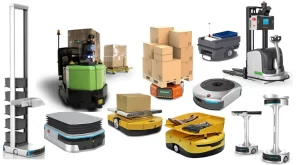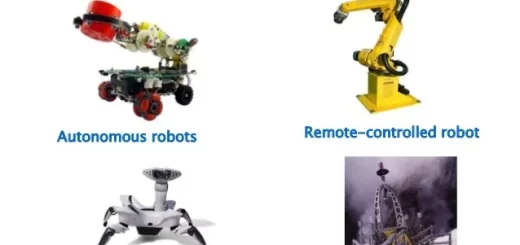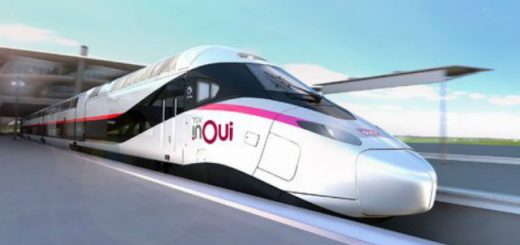Autonomous mobile robots (AMRs) review, use, advantages and disadvantages
Autonomous mobile robots are intelligent robots that can move around their environment without needing a direct operator or following a fixed path. AMRs are equipped with sensors, cameras, and artificial intelligence (AI) to navigate their surroundings without human intervention or predefined tracks.
What are (AMRs) robots?
Autonomous mobile robots (AMRs) are self-driving robots designed to move materials or goods around in a variety of environments. Unlike their cousins, Automated Guided Vehicles (AGVs) that follow fixed paths.
AMRs move freely using sensors and AI to perceive their environment and plan their route. This makes them adaptable to dynamic workplaces. AMRs are designed for specific tasks, most commonly transporting materials or goods. They can be equipped with grippers or other tools for picking and placing objects.
AMRs offer a flexible and efficient way to automate repetitive tasks, improving workflow and productivity. Packed with sensors, AMRs can safely navigate around people and obstacles, promoting a safer work environment. AMRs offer a strong value proposition for businesses looking to improve intralogistics. Their flexibility, scalability, and safety features make them a compelling solution.
AMR applications
Warehouses: Transporting goods, replenishing stock, and sorting items.
Factories: Moving materials between production lines.
Hospitals: Delivering medicine and supplies.
AMR characteristics
AMRs use wheels or tracks to navigate and have built-in sensors and cameras to perceive their surroundings. This lets them avoid obstacles and adapt to dynamic environments. Unlike automated guided vehicles (AGVs) that rely on predefined paths, AMRs can make their own decisions about how to get from point A to B. They use artificial intelligence and machine vision to navigate.
AMRs use sensors, cameras, and artificial intelligence to navigate their surroundings and avoid obstacles. They can move around freely within a designated area. They’re machines equipped with software and hardware to perform tasks.
AMRs are distinct from other automated guided vehicles (AGVs) that typically follow fixed paths like magnetic tape on the floor. This makes AMR more flexible and adaptable to changing environments. This makes them ideal for dynamic workplaces.
Because they’re not limited to fixed paths, AMRs can be easily reprogrammed to handle new tasks or adapt to changes in the workspace layout. This makes them ideal for unpredictable environments.
AMRs are revolutionizing various industries by automating tasks like transporting materials, goods, or medical supplies. They offer several advantages over traditional automation solutions, including:
- By automating repetitive tasks, AMRs free up human workers for more complex jobs.
- Equipped with sensors, AMRs can safely navigate around people and avoid collisions.
- Unlike complex automation systems, AMRs can be deployed quicker, often within weeks.
What can Autonomous mobile robots (AMRs) do?
Autonomous mobile robots (AMRs) are workhorses in many industries, especially manufacturing, warehousing, and logistics. They excel at automating tasks that involve moving things around. Autonomous mobile robots (AMRs) are versatile machines that can take on a variety of tasks in different settings.
Transportation: This is the most common AMR application. AMRs can move materials, goods, and finished products from one location to another within a facility, autonomously navigating their surroundings to avoid obstacles and ensure safe operation, and efficiently replacing manual transportation.
Inventory Management: AMRs can be programmed to assist with inventory management tasks such as stock replenishment. They can autonomously retrieve items from storage areas and deliver them to picking zones or packing stations.
Replenishment: In warehouses, AMRs can be programmed to automatically restock picking bins or shelves when inventory gets low.
Picking and Placing: Some AMRs are equipped with robotic arms or grippers, allowing them to pick up and place objects which can be helpful for assembly lines or sorting tasks. This can help sort items or assemble products.
Security and Patrol: AMRs can be equipped with cameras and sensors to perform security patrols in warehouses or other facilities. They can conduct automated inspections, They can detect unauthorized access or suspicious activity, and alert security personnel.
Delivery and Distribution: In healthcare settings, AMRs can deliver lab samples throughout the facility, They can be used to deliver medications and supplies to nurses and patients’ rooms or treatment areas.
Warehouse tasks: AMRs excel in warehouse environments. They can be programmed for tasks like:
- Replenishment: Refilling picking locations with fresh inventory to keep operations running smoothly.
- Put-away: Taking received items and storing them in their designated locations.
- Sorting: Sorting items based on specific criteria.
Logistics and Manufacturing: AMRs can be deployed in factories and logistics centers to:
- Move parts and materials between assembly lines.
- Transport finished goods to packaging or shipping areas.
AMRs are designed to automate repetitive and often time-consuming tasks that involve moving objects, allowing human workers to focus on more complex activities and improving efficiency and productivity in various industries. They are most valuable in applications that require flexibility and adaptation to a dynamic environment.
Autonomous Mobile Robots (AMRs) advantages
Flexibility: AMRs are highly adaptable. They don’t rely on pre-programmed tracks or magnetic tape or wires like Automated Guided Vehicles (AGVs). Instead, they use sensors and cameras to navigate and create their optimal routes, they can adapt to changing environments. This makes them perfect for dynamic environments where layouts can change frequently.
Scalability: Adding or removing AMRs is relatively simple. They can easily be integrated into existing operations and grow alongside your business needs. AMRs don’t rely on physical infrastructure changes. This allows you to scale your automation up or down as needed.
Faster Implementation: Setting up AMRs is relatively fast. They typically require minimal infrastructure changes and can be operational within weeks. Because AMRs don’t require extensive infrastructure setup, they can be deployed much quicker than AGVs.
Safety: Packed with sensors, Autonomous mobile robots (AMRs) are self-driving robots designed to move materials or goods around in a variety of environments. Unlike their cousins, Automated Guided Vehicles (AGVs) that follow fixed paths.
Efficiency: By automating tasks like transporting materials or fetching items, AMRs can improve overall workflow efficiency by reducing the need for manual movement. AMRs free up human workers for more complex activities, boosting overall efficiency.
Disadvantages of Autonomous mobile robots (AMRs)
- Payload Limitations: Generally, AMRs are designed for lighter-weight loads compared to industrial vehicles.
- Speed: AMRs typically travel slower than human workers or traditional industrial vehicles, and require charging time.
- Cost: While they may be less expensive to set up than AGVs due to minimal infrastructure needs, the initial cost of an AMR itself can be high.
- Environmental Dependence: For optimal performance, AMRs rely on well-mapped and predictable environments. Unforeseen changes or clutter can disrupt their navigation. AMRs work best in controlled environments with clear pathways and minimal clutter.
- Safety Concerns: Even with safety features, there’s always a potential risk of collisions with people or objects, so proper training and protocols are necessary to avoid accidents when AMRs operate alongside people.
You can subscribe to Science Online on YouTube from this link: Science Online
You can download Science Online application on Google Play from this link: Science Online Apps on Google Play
Self Driving cars review, features, advantages and disadvantages
Unmanned aerial vehicle (UAV) (Drones) uses, advantages and disadvantages
Wireless bomb disposal robots or explosive ordnance disposal (EOD) uses, types, features and design
Remotely-operated underwater vehicles (ROVs) Features, types, advantages and disadvantages




